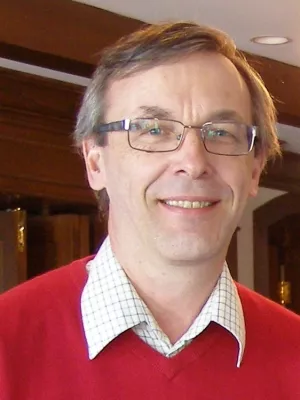
Michael Ljungberg
Professor

Multi-centre evaluation of accuracy and reproducibility of planar and SPECT image quantification : An IAEA phantom study
Författare
Summary, in English
Accurate quantitation of activity provides the basis for internal dosimetry of targeted radionuclide therapies. This study investigated quantitative imaging capabilities at sites with a variety of experience and equipment and assessed levels of errors in activity quantitation in Single-Photon Emission Computed Tomography (SPECT) and planar imaging. Participants from 9 countries took part in a comparison in which planar, SPECT and SPECT with X ray computed tomography (SPECT-CT) imaging were used to quantify activities of four epoxy-filled cylinders containing 133Ba, which was chosen as a surrogate for 131I. The sources, with nominal volumes of 2, 4, 6 and 23mL, were calibrated for 133Ba activity by the National Institute of Standards and Technology, but the activity was initially unknown to the participants. Imaging was performed in a cylindrical phantom filled with water. Two trials were carried out in which the participants first estimated the activities using their local standard protocols, and then repeated the measurements using a standardized acquisition and analysis protocol. Finally, processing of the imaging data from the second trial was repeated by a single centre using a fixed protocol. In the first trial, the activities were underestimated by about 15% with planar imaging. SPECT with Chang's first order attenuation correction (Chang-AC) and SPECT-CT overestimated the activity by about 10%. The second trial showed moderate improvements in accuracy and variability. Planar imaging was subject to methodological errors, e.g., in the use of a transmission scan for attenuation correction. The use of Chang-AC was subject to variability from the definition of phantom contours. The project demonstrated the need for training and standardized protocols to achieve good levels of quantitative accuracy and precision in a multicentre setting. Absolute quantification of simple objects with no background was possible with the strictest protocol to about 6% with planar imaging and SPECT (with Chang-AC) and within 2% for SPECT-CT.
Avdelning/ar
- Nuclear Medicine Physics
- Medicinsk strålningsfysik, Lund
Publiceringsår
2017-06
Språk
Engelska
Sidor
98-112
Publikation/Tidskrift/Serie
Zeitschrift für Medizinische Physik
Volym
27
Avvikelse
2
Dokumenttyp
Artikel i tidskrift
Förlag
Elsevier
Ämne
- Medical Laboratory Technologies
- Radiology and Medical Imaging
- Other Physics Topics
Nyckelord
- Humans
- Image Processing, Computer-Assisted
- Phantoms, Imaging/standards
- Radiometry
- Reproducibility of Results
- Tomography, Emission-Computed, Single-Photon/methods
Aktiv
Published
Forskningsgrupp
- Nuclear Medicine Physics
ISBN/ISSN/Övrigt
- ISSN: 1876-4436

